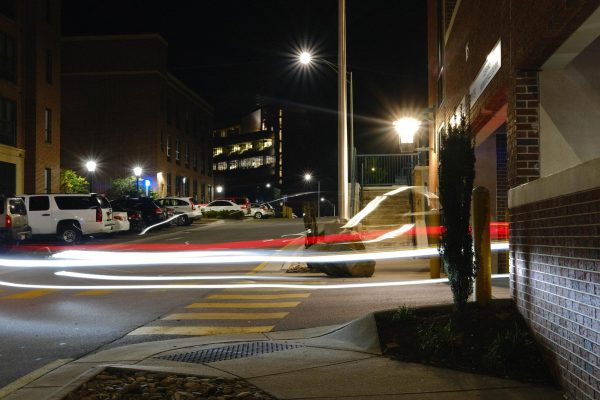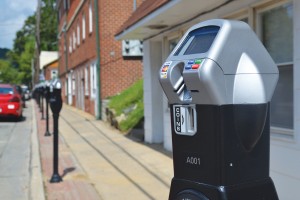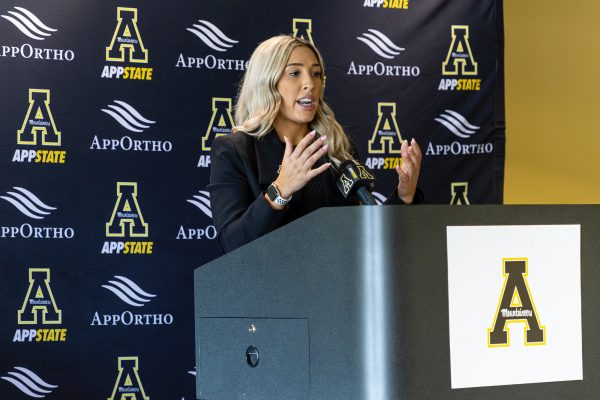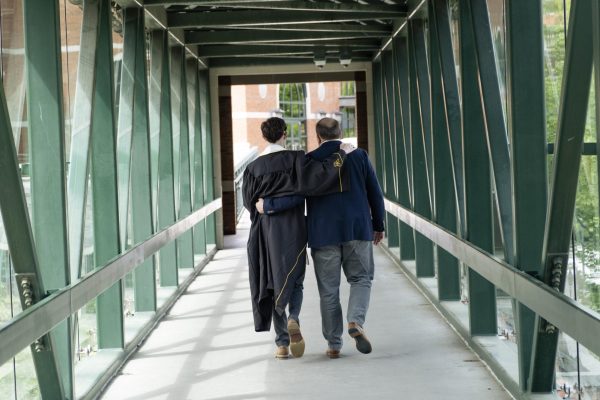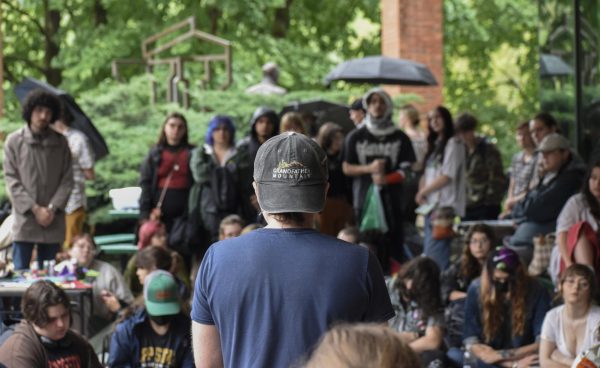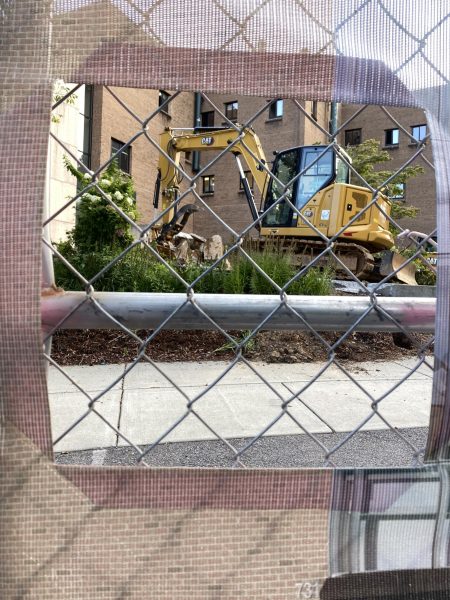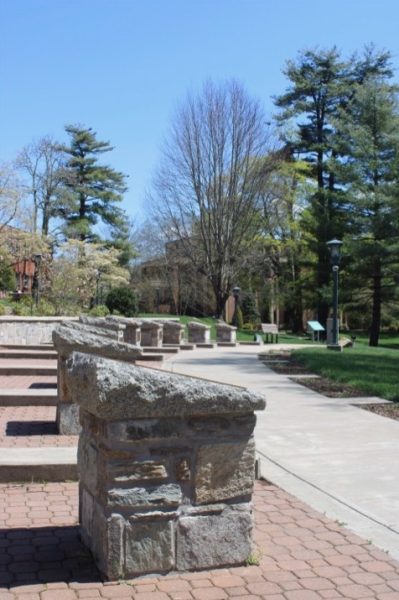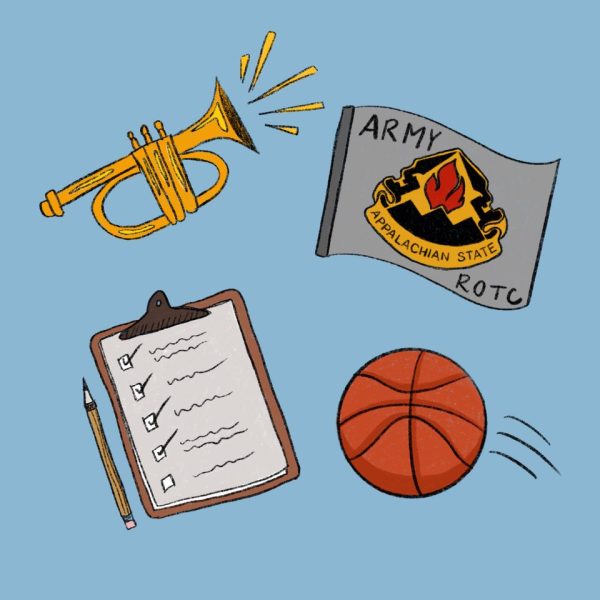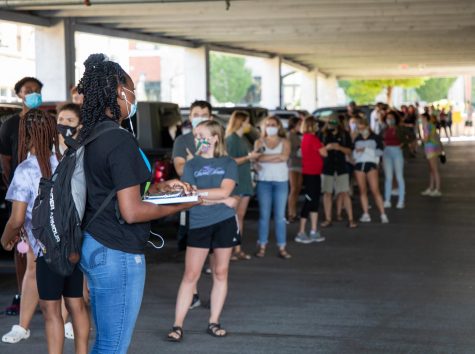This day in history: App State begins construction as student enrollment increases
March 22, 2022
Jenna Guzman curated this story which The Appalachian originally published March 23, 1961.
The coming of spring marks the beginning of construction of several new facilities at Appalachian. Work has been started on clearing the sites for an Industrial Arts building, Home Economics Building, and a new football and athletic field.
Work is also being done on an addition to the College Book Store.
Dr. W.H. Plemmons, college president, said that within a few weeks, construction of a new dormitory for women will be started. It is hoped the construction of a new science building will be underway in June.
These projects represent an expenditure of nearly two million dollars.
The industrial arts building will be on Faculty Street, behind the laundry and power plant. Trees have been cut and dirt is being moved to get ready for building. Industrial arts courses presently are taught in the fine arts building.
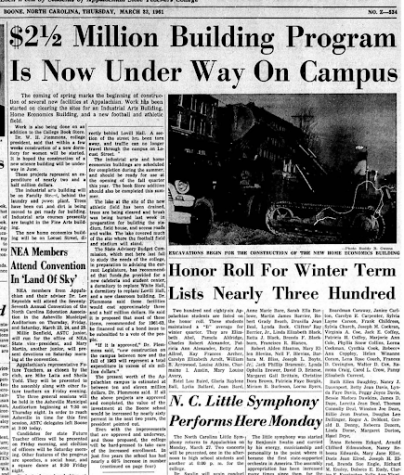
The new home economics building will be on Locust Street, directly behind Lovill Hall. A section of the street has been torn away, and traffic can no longer travel through the campus on Locust Street.
The industrial arts and home economics building are scheduled for completion during the summer, and should be ready for use at the opening of the fall quarter this year. The book store addition should also be completed this summer.
The lake at the site of the new athletic field has been drained, trees are being cleared and brush was being burned last week in preparation for building the stadium, field house, and access roads and walks. The lake covered much of the site where the football stadium and field will stand.
The State Advisory Budget Commission much met here last fall to study the needs of the college, in preparation to advising the current Legislature, has recommended that funds be provided for a new cafeteria and new and student center, a dormitory to replace White Hall, a dormitory to replace Lovill Hill, and a new classroom building. Dr. Plemmons said these facilities would cost approximately three and a half million dollars. He said it is proposed that most of these items, recommended for 1961-63, be financed out of a bond issue to be submitted to a vote of the people.
“If it is approved,” Dr. Plemmons said, “new construction on the campus between now and the fall of 1963 will represent a total expenditure in excess of six million dollars.”
The present worth of the Appalachian campus is estimated at between ten and eleven million dollars, Dr. Plemmons said. If all the above projects are approved and completed, the value of the investment at the Boone school would be increased by nearly sixty percent in the next two years, the president pointed out.
Even with the improvements that are approved and underway, and those proposed, the college will be hard-pressed to take care of the increased enrollment. In just five years the school has had nearly a 60% increase in number of students. Dr. Plemmons daid, “It can be recognized that we are hardly holding our own in providing necessary facilities for the students.”
“Consequently,” he continued, “we shall request the Appropriations Committee to restore to its list some of the items (which college officials had asked for) not recommended by the Advisory Budget Commission. If enrollment continues to increase, as there is evidence that it will, additions to the campus will have to be continued at the present or even an increased pace.”
Dr. Plemmons, Vice-President and comptroller of the college, Bob Allen, and Ned Trivette and several members of the board of trustees were in Raleigh last week appearing before the joint Appropriations Committee and conferring with State and Legislature officials concerning the needs of the college, to take care of present and future enrollments. They expect more than 2500 students will enroll this fall, and that the college will have an enrollment of 3900 by 1965.
Actually, the enrollment is running ahead of estimates made by the Board of Higher Education, causing officials to ask that some items removed from the college recommendations by the Advisory Budget group be stored.









